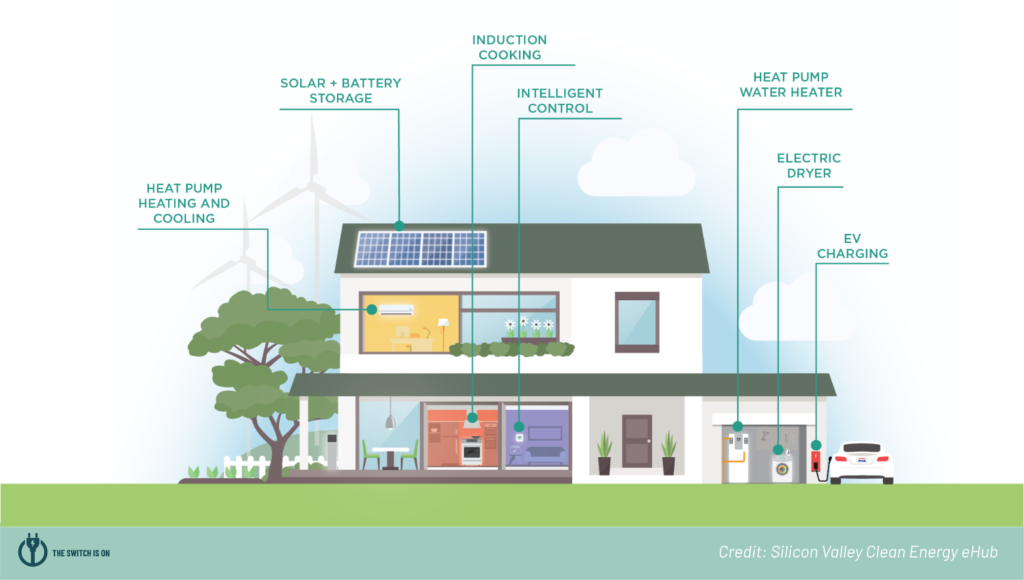If you haven’t heard of a software product called XeroHome, you will pretty soon. It is the primary product of startup company Vistar Energy in Rocklin. It is positioned in the sweet spot of a combination of Big Data + Machine Learning + Generous Rebate Incentives. It is a product likely to be central to the push for building decarbonization/electrification. It is being rapidly deployed in cities in California and likely pushing on to New York and Georgia this year. It’s not often that so many trends align to boost a company’s fortunes but it seems to be happening in our backyard. It’s quite a story.
After 15 years as a building energy consultant for TRC Energy Services (formerly Heschong Mahone Group Inc.) in Fair Oaks, Mudit Saxena with a graduate degree in building science struck out on his own and formed Vistar Energy. His intent at Vistar was to focus on ways to identify the best opportunities to save energy and carbon emissions in buildings. It soon became pretty clear that a better tool was needed to achieve carbon reduction in buildings at scale to meet the challenges of climate change. He was joined in 2018 by data scientist Peter May-Ostendorp and cloud platform specialist Inderdeep Dhir. They decided their mission should be: To fundamentally change the way the home energy upgrade market works today, by making accurate data on clean energy upgrade opportunities for all homes available to all market participants. The result was the creation of the software tool, XeroHome.
That tool provides homeowners clear and actionable guidance on how to reduce their home’s energy use and where to invest first by building an energy model of the home. The big innovation is that this is done remotely with no home visit and in particular no labor-intensive home energy audit with the blower door, etc., is required. The model remotely acquires data from property assessments, building permit records, and aerial/satellite imagery. Advanced data analytics are run to optimize results of thousands of scenarios to find a zero-net energy path for each home. The model looks at a number of changes that could be made (see diagram below for an illustration). Even more importantly, these analytics can be run on thousands of homes in a city at once. Utilities and local governments can use XeroHome to target properties that can most benefit from their program offerings and yield maximum energy and carbon reductions. Cities interested in adopting codes to decarbonize buildings can refine rules to achieve the biggest bang for the buck by using XeroHome to look at all homes in their jurisdiction. Santa Monica used XeroHomes exactly for this purpose and looked at all 8,000 homes at once. The result showed that the city could develop ordinances such as reach codes where installing rooftop PV and heat pump water heaters on existing structures could be required at the time a home is sold or when a permit is needed for changing the heating system, installing PV, or other major upgrades.
All very interesting, but who pays for the upgrades? In some cases, the upgrades could cost $50,000. As luck would have it, in 2019 a coalition launched a program (“The Switch is On”) to help customers pay to get upgrades that significantly reduce carbon emissions, most notably from switching off gas appliances to electric ones. That incentive plus rebates offered by utilities, cities and the new Community Choice Aggregators, and tax credits mean the cost to consumer could be knocked down by as much as 75%. With the incentives, the payback on the upgrades can be seven years or less.
The roll-out of XeroHome, now the only product focus of Vistar Energy, began in 2021 with deployments in a few cities in California. The results have been very positive and the feedback from clients has helped to sharpen the product. With the convergence of all the growing attention on decarbonizing buildings to meet climate change goals and the incentives to get it done, XeroHome looks like the right product at the right time. It is very cost-effective to scale and Mudit and his team believe it is miles ahead of the competition through its proprietary data analytics approach linked to machine learning.
He wants to expand quickly to spread the access to XeroHome and convert it into a SaaS product. He wants to add more engineers to customize and expand the product. He wants to look at similar situations where Big Data and Machine Learning can provide opportunity. He probably will find them.


ABOUT THE AUTHOR
Gary Simon is the Chair of CleanStart’s Board. A seasoned energy executive and entrepreneur with 45 years of experience in business, government, and non-profits.
CleanStart Sponsors
Weintraub | Tobin, BlueTech Valley, Revrnt,
Moss Adams, PowerSoft.biz, Greenberg Traurig, Momentum,
College of Engineering & Computer Science at Sacramento State


